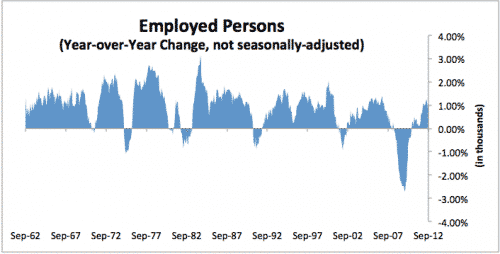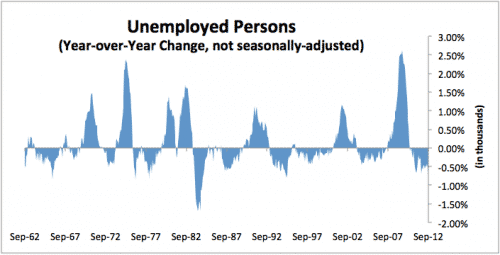Chart of the Day: Employed and Unemployed Persons, Household Survey
There has been a lot of controversy about today’s employment situation summary because of comments by Jack Welch, the former GE CEO. Welch suggested on Twitter that the Obama Administration had manipulated the household survey data to give him an electoral boost. Yes, the large addition of jobs in the household survey was unexpectedly favorable for the President. But I believe Welch’s claims are unfounded, particularly because the establishment survey number for non-farm payrolls at +114,000 jobs in September was not favorable. And that is the number most people care about even though the unemployment rate is calculated using the household survey. And when you look at a 3-month average, the household survey and the establishment survey do mirror each other. The jump in the household survey employment is just an example of month-to-month data noise.
Let’s take a step back and look at the bigger picture, here. What is clear from the charts below is that the employment losses in the last downturn were massive and the gains since then are decent but not anywhere near as large as the losses. What I did is took the year-on-year change in the unadjusted number for employed persons and unemployed persons in the household survey and divided it by the total population for the last fifty years. The goal was to get an apples-to-apples representation of how the jobs market has changed during that time span by eliminating seasonal factors and labor participation rate changes. The result is what you see below. In my view, it is the longer-term picture of the labor market that will affect voter turnout and voting patterns, not a single data point from a month before the election.


Yes the figures are just noise. I do not doubt that jobs are being created but at lower wages and hours than before. This is more indicative of Congress rather than Obama. The country needs a fiscal policy as monetary policy has reached its natural conclusion.